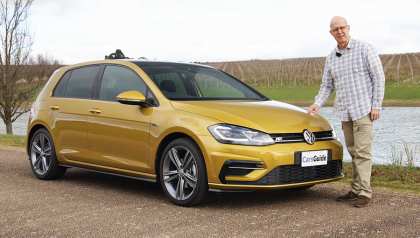The small car segment is a shadow of its former self, but that isn’t stopping some brands from entering the fray with competitive models for those willing to think outside the SUV box.
Take this car, for example - it’s the all-new Skoda Scala 2021 model, which has finally launched in Australia after months of delays. The Scala has been on sale in Europe for almost two years, but it’s finally here. So has it been worth the wait? You bet.
In typical Skoda fashion, the Scala offers food for thought against established rivals like the Mazda 3, Hyundai i30 and Toyota Corolla. But in fact its most natural rival is the Kia Cerato hatch, which - like the Scala - blurs the boundaries between a hatchback and a wagon.
The Scala replaces the Rapid Spaceback, which was of a similar ilk. Czech speakers will understand the “samorost” element of the Scala, which really doesn’t conform to class norms.
But with a number of other Skoda models that could instead vie for your money - the Fabia wagon, Octavia wagon, Kamiq light SUV or Karoq small SUV - is there a reason for the Scala to be here? Let’s find out.
Skoda Scala 2021: 110 Tsi Launch Edition
| Engine Type | Turbo 4, 1.5L |
|---|---|
| Fuel Type | Premium Unleaded Petrol |
| Fuel Efficiency | 5.5L/100km (combined) |
| Seating | 5 |
| Price From | $27,390 - $33,000 |
| Safety Rating |
|
Does it represent good value for the price? What features does it come with?
7 / 10
The 2021 Skoda Scala model range price list makes for some interesting reading. In fact, the brand’s local team claims the pricing layout is “formidable”.
I wouldn’t necessarily go that far. You can get some pretty compelling alternatives in the form of Hyundai i30, Kia Cerato, Mazda3, Toyota Corolla or even the Volkswagen Golf. But it is interestingly specified.
The entry point to the range is simply known as the 110TSI, and it is the only model available with a manual transmission (six-speed manual: $26,990 drive-away) or the seven-speed dual-clutch automatic transmission ($28,990 drive-away). Those are official prices from Skoda, and they’re correct at the time of publication.
Standard equipment for the 110TSI includes 18-inch alloy wheels, an electric tailgate, LED rear lighting with dynamic indicators, halogen headlights, fog lights, tinted privacy glass, an 8.0-inch touchscreen media system with Apple CarPlay and Android Auto smartphone mirroring, wireless phone charging, a 10.25-inch digital instrument display.
There are two USB-C plugs up front and two more in the rear for charging, a covered centre armrest, leather steering wheel, manual seat adjustment, ambient lighting in red, a space saver spare wheel and tyre pressure monitoring, plus the “Trunk Package” with multiple cargo nets and hooks in the boot area. Note, the base car doesn’t have a 60:40 split-fold seat back.
.jpg)
The 110TSI also scores a reversing camera, rear parking sensors, adaptive cruise control, auto-dimming side mirrors with heating and power adjust, driver fatigue detection, lane keeping assist, AEB and more - read the safety section below for the safety details.
Stepping up from there is the auto-only Monte Carlo, which lists at $33,990 drive-away.
This model adds a number of really desirable items, including an exterior design black pack and black 18-inch wheels, a panoramic glass roof (not an actual opening sunroof), sports seats and pedals, full LED headlights, dual-zone climate control, smart key (proximity) unlocking and push-button start, and the brand’s Sport Chassis Control setup - it’s lowered 15mm and has adaptive suspension as well as Sport and Individual drive modes. And of course, it has a black headliner.
And topping the range is the $35,990 (drive-away) Launch Edition. Note: an earlier version of this story stated the price was $36,990 drive-away, but that was a mistake on Skoda Australia's part.
It adds body coloured door mirrors, a chrome grill frame and window surrounds, 18-inch aero-style wheels in black and silver, leather and “Suedia” seat trim, heating for front and rear seats, electric driver’s seat adjustment, a 9.2-inch media system with sat nav and wireless Apple CarPlay, auto lights and auto wipers, auto-dimming rearview mirror, semi-autonomous parking, blind-spot monitoring and rear cross-traffic alert.
The Launch Edition is basically the burger with the lot, while the other models can have some extras added by way of Skoda’s pre-selected packs on the lower grades.
For instance, the 110TSI is available with the $4300 Driver Support Pack, which adds the leather and heated seats with driver’s electric adjust, climate control air-con, blind-spot and rear cross-traffic alert, and the auto-parking system.
There’s also the Tech Pack ($3900) for the 110TSI, which upgrades the media system to the 9.2-inch nav unit with wireless CarPlay, adds upgraded speakers, and includes full LED headlights, as well as keyless entry and push-button start.
And the Monte Carlo model is available with a Travel Pack ($4300), which swaps in the bigger media screen with GPS and wireless CarPlay, adds auto parking, blind spot and rear cross-traffic, adds heated front and rear seats (but keeps the Monte Carlo’s cloth trim), and scores paddle shifters, too.
Concerned about colours? There are a few options to choose from. All variants are available with optional Moon White, Brilliant Silver, Quartz Grey, Race Blue, Black Magic (costing $550), and there’s also Velvet Red premium paint ($1110). The 110TSI and Launch models can also be had in Candy White (at no cost), while there’s a hero Steel Grey for the Monte Carlo only (no cost).
.jpg)
Want that panoramic glass roof on your car, but don’t want to buy the Monte Carlo? That’s doable - it’ll cost you $1300 on the 110TSI or Launch Edition.
If you need a factory fitted tow bar, that’ll be $1200. Other accessories are available as well.
It’s a bit of a mixed bag here. There are some things we’d certainly wish for on a base car (LED lights, for example) but they aren’t available unless you’re willing to fork out a fair bit more. That’s a shame.
Is there anything interesting about its design?
8 / 10
The Skoda Scala brings the brand’s most current design language and steps away from the arguably awkward lines of the existing Rapid model. It is more conventionally attractive, don’t you agree?
But it’s the shape of the Scala that could raise a few eyebrows. It’s not quite the same silhouette as the current crop of hatchback models, like the aforementioned Kia Cerato. It has a longer roofline, a more bulbous rear-end design that isn’t going to be to all tastes.
It has grown on me during my time with the car, but a few friends commented with the expected “so is it a hatch or a wagon?” queries.
It is compact, measuring 4362mm long (shorter than the hatch versions of the Corolla, Mazda3 and Cerato) on a 2649mm wheelbase. The width is 1793mm and the height is 1471mm, so it’s smaller than an Octavia or Karoq, but bigger than a Fabia wagon or Kamiq. Again, is there really a gap to play in, there? If I had to look into my crystal ball, I doubt I would see another Fabia wagon in the next generation… But then again, the pair has coexisted to this point, so who knows.
That said, the Scala easily fills the same spot in the brand’s lineup as the old Rapid, as a half-hatch, half-wagon style thing. If you’re wondering what a Czech word to describe this is, it’s "samorost" - someone or something that doesn’t necessarily comply with established norms and expectations.
That’s despite the fact the Scala is thoroughly more eye-catching - for all the right reasons. It has the brand’s more angular, edgy styling, with those triangulated headlights looking the business - at least on the LED-equipped cars. I can’t believe Skoda backflipped on that and went with halogens for the base model. Ew. At least they have LED daytime running lights, where some new rivals have halogen DRLs.
.jpg)
But the styling is really eye-catching, with those triangulated headlights with their “crystal” linework, the mirrored bumper lines, a more refined grille finish than previous small Skoda models - it all just looks smart and sharp.
The side profile has crisp finishes, too, and with all models sold here scoring 18-inch rims, it’s a complete looking car.
The rear gets the now ‘necessary’ brand lettering across the familiar black glass tailgate section, and the tail-lights carry the triangle theme, and again, those excellent crystallised elements glint in the light.
The boot lid is electric (you can open it using the key, too) and there’s a big boot space - more on that in the next section, where you’ll also find a selection of interior images.
How practical is the space inside?
9 / 10
Skoda has a bit of a reputation for packing lots into a little space, and the Scala is no exception. It is definitely a smarter option than most small hatchbacks - the Mazda3 and Corolla, for instance, which both offer poor rear-seat/boot space comparatively - and indeed is going to be a better car for a lot of customers than plenty of small SUVs, too. Specifically, the Hyundai Kona, Mazda CX-3/CX-30 and Subaru XV.
That’s because the Scala has a big boot for its compact size, measuring 467 litres (VDA) with the seats in place. There’s the usual array of Skoda’s clever cargo nets, and there’s a reversible carpet mat that is perfect if you’ve got muddy shoes or swimmers that you don’t want to dampen the cargo zone.
There’s a 60:40 split-fold seat on all but the base model car, but if you’re loading long items through, just be aware there’s a bit of a lip to contend with. But that said, the boot is big enough to fit our CarsGuide suitcase set (134L, 95L and 36L hard cases) with room to spare. There are shopping bag hooks as well, and a space saver spare wheel under the floor, too.
And passenger space is very good for the class, too. In the front, I had plenty of space for my 182cm/6’0” frame, and the seats offer good adjustment and comfort, as well as good steering wheel adjustment too.
Sitting behind my own driver’s position, I had good toe, knee and head room, though if you’re planning to fit three adults across the back, toe-space will be a bit of a concern as there’s a big transmission tunnel intrusion. Thankfully there are rear air-vents in the back.
.jpg)
If you’re looking at a car like the Scala as you might a Rapid hatchback - like our man Richard Berry, and my next-door neighbour - as a vehicle for your family of three (two adults and a child under six years old), the Scala will be a very good fit for your lifestyle. There are dual ISOFIX outboard child-seat attachments, and three top-tether points as well.
.jpg)
In terms of storage, there are big bottle holders in all four doors with additional storage in the front doors, and there are map pockets in the back but no cup holders or flip-down armrest in any spec.
The front gets a set of three cup holders that are a bit shallow, those are positioned between the seats. In front of the gear selector is a good sized cubby with wireless phone charging, and there’s a small covered centre console bin with an armrest between the front seats, too. Oh, and of course, there’s the clever umbrella hidden in the driver’s door, too.
.jpg)
Charging is taken care of not only by that Qi wireless pad, but also with four USB-C ports - two in the front, two in the back.
And the media unit in our test car - the 9.2-inch Amundsen screen with sat nav and wireless Apple CarPlay smartphone mirroring (wired Apple CarPlay and Android Auto is available, as well as standard USB reading and Bluetooth phone/audio streaming) - worked okay once I figured out the best settings.
I had no end of trouble with the wireless CarPlay situation, and even the plugged-in CarPlay setup - it caused me some serious frustration. Thankfully, after playing with settings, resetting the connection on my phone (three times), turning off the Bluetooth and eventually getting everything to play nice, I had no issues. It took three days and several drives for me to get there, though.
.jpg)
I also don’t love that the fan controls have to be managed through the infotainment screen. You can set the temperature using the knobs below the screen, but the fan speed and other controls are done through the screen. You can get around it by using the “Auto” setting for the air-con, which is what I did, and it was much easier to get along with than the CarPlay problems.
Those tech hiccups are one thing, but the perceived quality of the materials is impressive. There is a leather steering wheel for all grades, the seats are comfy (and the leather/Suedia finish is lovely), while the plastics are soft on the dash-top and doors, and there are soft padded sections where your elbows go.
.jpg)
The red ambient lighting strip (under the rose-chrome or red-chrome finish that runs across the dash) adds some flash to the function, and while the cabin isn’t the most exciting in the class, nor the most luxurious, it could just be the smartest.
(Note: I also went and checked out a Monte Carlo model - which has red-trimmed cloth seats front and rear, that red-chrome dash finish, and the version I saw had the panoramic roof fitted, too - and if you want some additional spice, it’s definitely going to be more to your taste.)
What are the key stats for the engine and transmission?
8 / 10
The powertrain used in all Scala models in Australia is a 1.5-litre four-cylinder turbo-petrol unit, producing 110kW of power (at 6000rpm) and 250Nm of torque (from 1500-3500rpm). Those are pretty decent outputs for the class.
It is available with a six-speed manual transmission in the base grade only, and that version comes with an optional seven-speed dual-clutch automatic transmission, which is standard on the Launch Edition and Monte Carlo models.
.jpg)
The Scala is 2WD (front-wheel drive), and there is no AWD/4WD (all-wheel drive) version available.
Wishing for a diesel, hybrid, plug-in hybrid or full electric EV version of the Scala? Sadly, that’s not the case. We only get the 1.5 petrol.
How much fuel does it consume?
8 / 10
The claimed combined cycle fuel consumption - which is what you should apparently achieve across a mix of driving - is just 4.9 litres per 100 kilometres for the manual models, while the auto versions claim 5.5L/100km.
On paper, those are almost hybrid-like levels of fuel economy, and in reality the Scala is pretty frugal and it even has a clever cylinder deactivation system that allows it to run on two cylinders under light loads or on the highway.
Across our testing loop - which included urban, traffic, highway, back road, country and freeway testing - the Scala returned an at-the-pump fuel consumption figure of 7.4L/100km. Pretty good!
The Scala has a 50-litre fuel tank, and you must fill it with 95RON premium unleaded at a minimum.
Warranty & Safety Rating
What safety equipment is fitted? What safety rating?
8 / 10
The Skoda Scala has been awarded a five-star ANCAP crash test rating, and that was against the 2019 scoring criteria. Yes, that’s two years ago, and yes, the rules have changed since then. But the Scala still comes very well kitted out with safety tech.
All versions are fitted with autonomous emergency braking (AEB) that works from 4km/h to 250km/h. There is also pedestrian and cyclist detection as part of that, operable from 10km/h to 50km/h.
All Scala models also have lane departure warning with lane keeping assistance, which works from 60km/h to 250km/h. And as well as that, there’s driver fatigue detection.
As mentioned in the price section, not all versions come with blind-spot monitoring or rear cross-traffic alert, but those that do also score rear cross auto braking, dubbed “Rear Manoeuvre braking assist”. It worked when I inadvertently reversed too close to an overhanging branch.
The models with the semi-autonomous parking feature incorporate front parking sensors as part of the package, while all models come standard with rear sensors and a reversing camera, too.
The Scala is fitted with seven airbags - dual front, front side, full-length curtain and driver’s knee protection.
What does it cost to own? What warranty is offered?
8 / 10
Skoda offers a standard five-year/unlimited kilometre warranty program, which is par for the course amongst mainstream rivals.
The brand also has a capped price servicing program that spans out to six years/90,000km, and the average cost per maintenance interval (every 12 months or 15,000km, whichever occurs first) equates to a service cost of $443 per visit, which is a little high.
But here’s the thing. Skoda offers prepay service packs that you can include in your finance repayments or pay as a lump sum at purchase. The service packs span three years/45,000km ($800 - would otherwise cost $1139) or five years/75,000km ($1200 - would otherwise be $2201). That’s a huge saving, and it’ll also save you having to budget that extra annual expense.
And while the first year of roadside assistance is included in the purchase price, if you maintain your Skoda with the brand’s dedicated network of workshops, that extends out to a maximum of 10 years.
Further, if you’re looking at a used Skoda Scala, you might like to know that you can even add a service pack “any time after the first 12 months/15,000km service” according to the brand, and it’ll cost you just $1300 for four years/60,000km of maintenance which Skoda reckons is about a 30 per cent saving. Nice.
What's it like to drive?
8 / 10
The Skoda Scala is a really pleasant and enjoyable car to drive. I say that after having driven the Launch Edition test vehicle more than 500km over six days - this is a really good little car.
There are things that you need to be aware of, like the engine’s teaming with the dual-clutch auto, which - in stop-start traffic - can be a little annoying. There’s a bit of lag to contend with, and that slurring feeling of the first gear take up might catch you off guard until you’re used to it. It is even more annoying if the engine’s start-stop system is active, as it adds about a second to the “okay, ready, yep, let’s go, okay, we’re off!” sequence from a standstill.
.jpg)
That said, for someone like me - who does a lot of highway driving to and from a major city, and doesn’t always have to deal with tailback traffic jams, the drivetrain works exceptionally well.
You might think that a 1.5L engine with these outputs mightn’t be enough, but it is. There’s plenty of linear power available to make use of, and the transmission is smart thinking and quick shifting as well. Plus, if you are on the open road, the engine cuts out two cylinders to save fuel under light loads. Neat.
.jpg)
The steering is great - easy to predict, nicely weighted and perfectly manageable. And unlike some other cars with plenty of advanced safety tech, the Skoda’s lane assist system didn’t have me turning it off every time I drove it. It’s less interventional than some, more subtle but still evidently very safe.
In twistier driving the steering was rewarding, and so was the handling. The suspension is really very well sorted in most situations. It’s only when you hit sharp edges that the 18-inch wheels (with Goodyear Eagle F1 rubber in 205/45 size) really make themselves felt. The rear suspension is torsion beam, while up front is independent, and the more enthusiastic driver will notice that if pushing hard.
.jpg)
The Launch Edition model has multiple drive modes - Normal, Sport, Individual and Eco - and each mode affects elements of the drive. Normal was very comfortable and composed, light and manageable, while in Sport it was as though the car’s jaw clenched, with a more aggressive approach to steering, gearing, throttle and suspension. The Individual mode allows you to tailor the drive experience to your desires. Pretty handy.
All in all, it’s a nice car to drive, and one I’d be happy to drive every day. It isn’t trying too hard, and that has to be applauded.
Verdict
The Skoda Scala is a very well packaged and thoughtful small car option. It’s not the most exciting or gorgeous or technologically advanced car in the market, but it’s one of the most compelling “alternatives” to the mainstream makes that I’ve driven in years.
It’d be hard to go past the Monte Carlo in terms of sporty appeal, but if budget is a key consideration the base model - maybe with one of those optional packs - would be very good indeed.
Pricing Guides






.jpg)
.jpg)
.jpg)
.jpg)
.jpg)
.jpg)
.jpg)
.jpg)
.jpg)
.jpg)
.jpg)
.jpg)
.jpg)
.jpg)
.jpg)
.jpg)
.jpg)
.jpg)
.jpg)
.jpg)
.jpg)
.jpg)
.jpg)
.jpg)
.jpg)
.jpg)
.jpg)
.jpg)
.jpg)
.jpg)
.jpg)
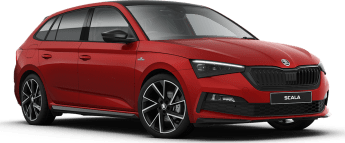
.jpg)
.jpg)
.jpg)
.jpg)
.jpg)
.jpg)
.jpg)
.jpg)
.jpg)
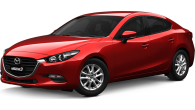
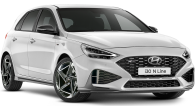
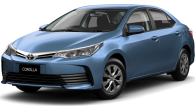
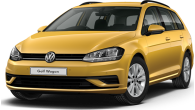
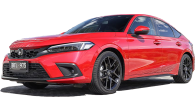




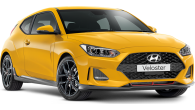


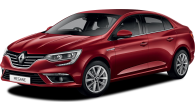







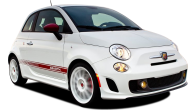
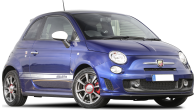
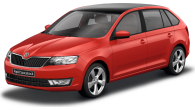
.jpg)

